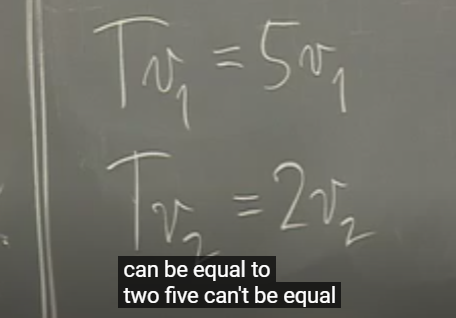-
Posts
5373 -
Joined
-
Days Won
52
Content Type
Profiles
Forums
Events
Everything posted by Genady
-
-
Sorry, the link is broken.
-
What you refer to is, -(-2)=2. It is not intuitive that it has to do with multiplication, i.e., (-1)*(-2)=2.
-

One of the most pointless phrases to learn in another language
Genady replied to Janus's topic in The Lounge
Interestingly, it seems that it went through the transposition between 'l' and 'r' twice. First, from 'taler' to 'tarel': (тарелка - Wiktionary, the free dictionary) Then it flipped again: (talerka - Wiktionary, the free dictionary) -
Well then. The only issue is that this book is aimed at adults as you said rather than at "little children" and thus does not answer the OP question.
-
Right. It would be a part of the big picture if other operations were presented in this way, too.
-
An alternative to appealing to symmetries approach could be to uncover what these number operations do to number line: - adding number shifts (translates) the line - multiplying by positive number stretches / compresses the line - multiplying by -1 flips / inverts the line. When the line is flipped / inverted, 2 -> -2, 3 -> -3, ..., and correspondingly, -2 -> 2, -3 -> 3, ... .
-
"Little children" in my question are school kids which are taught this rule - 3rd grade? As I don't remember any explanation given then to me, I think that there was not one. Like above. Just a rule. I wonder, is it still this way? Everywhere? "Hand waving" explanations like in the book posted by @studiot and the odd-even metaphor recalled by @MigL help perhaps to "get" the rule. How about a "Guess the Rule" game? Let them come up with a possible rule and find that other suggestions don't work?
-

One of the most pointless phrases to learn in another language
Genady replied to Janus's topic in The Lounge
I also know one word in Finnish: 'talerka', a plate. I remember it from childhood because we had a Finnish set with this word on it and it was funny as it seems to be a misspelled and mispronounced Russian word, 'tarelka' (тарелка), a plate. Now I wonder which way the "misspelling" went and who in fact was dyslexic. -

One of the most pointless phrases to learn in another language
Genady replied to Janus's topic in The Lounge
Every language has homonyms. In most cases, they are unambiguous in a context/sentence. -
Does anybody know/remember how this rule of number multiplication (see the title) is/was explained to little children?
-

One of the most pointless phrases to learn in another language
Genady replied to Janus's topic in The Lounge
Perhaps it is so in 'language for tourists' courses. In no language class I've taken I was taught how to ask that. -

Taking my girlfriend to Alpha Centauri on the Millennium Falcon 2
Genady replied to Gian's topic in Relativity
While the parts with constant relative speed require just algebra, the acceleration and deceleration are more involved. E.g., -

Bias in science (split from Evolution of religiosity)
Genady replied to Luc Turpin's topic in Other Sciences
No, there are no such assumptions in science. (With the exception of "etc.", of course.) Demonstrate them. -

Bias in science (split from Evolution of religiosity)
Genady replied to Luc Turpin's topic in Other Sciences
You haven't demonstrated this kind of bias in science. -

Bias in science (split from Evolution of religiosity)
Genady replied to Luc Turpin's topic in Other Sciences
The article: 2408.11065 The word 'bias' appears once in the article, in the following paragraph: The next paragraph says, -

Why is MIT and Caltech hostile to eccentrics and introverts?
Genady replied to 17Gahja34's topic in Science Education
3.5 years later... -
This assumption is wrong. - under specific extreme circumstances, such as when their or their families' lives are in danger, they are extremely starved, frightened, etc. And, even in these situations, most people will act "civilized".
-
Me too.
-
-
He is doing the former, not the latter.
-
Actually, he is. Here is how: Firstly, he is i.e., he is calculating the ratio, (universe volume)/(SU(3) effective volume). Then, he is dividing the energy density by this ratio, i.e., he is calculating, (energy density)/(universe volume)*(SU(3) effective volume). Or, equivalently, (energy density)*(SU(3) effective volume)/(universe volume). So, he is in fact
-
This part is correct: 😉 He has a mathematical reason to say "if".




